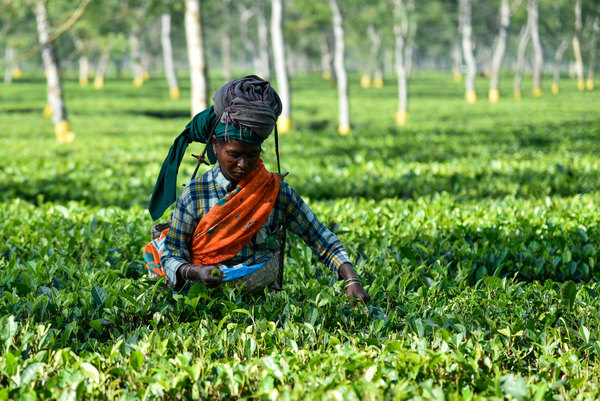Natural England launches the Future of Farming awards 2008
Natural England are inviting farmers and farm managers across England (UK) to enter Natural England’s 2008 Future of Farming Awards. The award scheme, which opened for registration on Monday 7 April, recognises and celebrates farmers in England who have integrated wildlife, landscape and access management with more sustainable farming production on their farms. The awards…
25 future novel threats facing UK biodiversity
There requires a greater emphasis on forecasting and critical evaluation, and less dawdling on existing, well studied issues: in summary, this is the main recommendation made by 35 senior representatives from UK academia, environmental management & policy, and scientific journalism. Using a technique called ‘horizon scanning.’ They have established a list of 25 future novel…
Will it be Mimi, Cherie, Annabel or Orla?
No, I’m not talking about the celebrities in this week’s OK! magazine, I’m talking about potatoes. Featured in the March issue of The Garden, these horticultural lovelies have all been awarded the RHS Award of Garden Merit (AGM). Each cultivar was judged on tuber quality, eye depth, skin colour and flesh colour, yield and taste.
Rethink urged on biofuel targets
From next month, UK government policy demands inclusion of biofuels into fuel at the pumps. The Renewable Transport Fuels Obligation (RTFO) is to introduce 2.5% biofuels at the pumps from April 2008. But those calling for a halt on targets, including the EU targets for inclusion of 5.75% biofuels in road fuel by 2010 and…
Ug99: One Year On
An opportunity here, for me to recap on a post I wrote back in January ’07. Puccinia graminis strain Ug99 has once again hit the headlines and it isn’t good news. The situation in outline is that the Ug99 strain of black rust fungus readily attacks wheat plants, as it resists the most popular rust-resistance…
Death by CAP
How EU economists are ‘killing Europeans through CHD’ Surprisingly, it’s not the acronyms that are at the root of the World Health Organization’s damning accusation, it’s our old friends, saturated fats. The common agricultural policy (CAP) was put in place by the powers that be in Europe, not just to confuse any non-economist who has…
Algae for biofuels: solving the land-use problem
It’s becoming increasingly obvious that there isn’t enough suitable land space to grow crops for food and feed as well as for biofuel, and to retain the forests and other land uses that sequester carbon in huge quantities. As the Nature blog ‘The Great Beyond’ points out, two articles published in Science in February argue…
Organic biofuels?
While discussing biofuels with a colleague the other week, I wondered whether there was any demand for organically grown biofuels, as people interested in protecting the environment are likely to be interested both in biofuels and in organic agriculture. Not long afterwards I came across a record in CAB Abstracts for an article1 on the…
Watch out – there’s a snakehead about!
A giant snakehead (Channa micropeltes) has been caught it British waterways causing alarm amongst anglers. Branded as "Sid Fishious" by the press, the catch featured in this week’s Angler’s Mail article "Killer Frankenfish caught in UK river!" The predatory piscean (all 3lbs of it!) was caught from the River Witham in Lincolnshire. Staff at the…
National Invasive Weed Awareness Week in USA
Sunday marks the beginning of the 9th annual "National Invasive Weeds Awareness Week" over in Washington D.C., USA. Looking at the packed agenda, the week looks to be well supported by all the players in US invasive species research, control and policy sectors. If you can not make any of the meetings and are…


